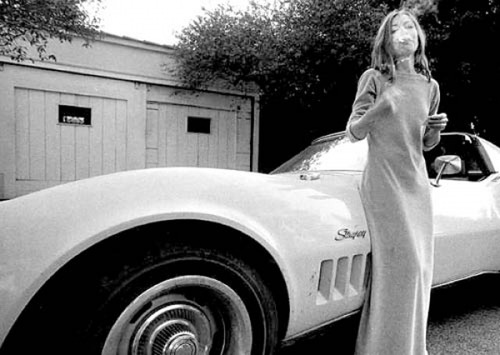
When I first moved to Los Angeles, I sat by Echo Park Lake and read Joan Didion’s 1970 novel Play It as It Lays twice. You have to be a special kind of depressive to read this book more than once, especially more than once back to back. It follows Maria Wyeth, actress and model of minimal success and wife to an up-and-coming movie director, as her life falls apart. Her young daughter, Kate, suffers from a mysterious mental illness and is institutionalized. Maria files for divorce. She gets an abortion. She becomes, in her agent’s words, “a slightly suicidal situation.”
Although Play It as It Lays has achieved classic status—it was on Time’s List of the 100 Best Novels—many readers find Maria unbearably dramatic, self-centered, messy, and babyish. I think it takes a personality with both a tendency towards old-fashioned melodrama and a ruthless, sad/beautiful, cinematic nihilism to pick up what Play It as It Lays is putting down.
I sat on a crumbling stone bench set into the greenery surrounding the lake, and dead birds of paradise got tangled in my hair. It was lovely: ducks hung out in the shallows and the statue of Lady of the Lake laid her shadow in the water. But as I observed the men pushing ice cream carts, the families, dogs, and joggers circle the lake, it was as if every vision concealed a dark edge, a poison that floated imperceptibly in the daylight. Toddlers almost pitched themselves into the water when their parents looked away. A man threw a tennis ball into the lake and his little dog swam out to retrieve it over and over again. Every time it looked to me like the dog was faltering, she had gotten too tired, she might drown right there near the fountain.
At one point in Play It as It Lays Maria takes in the action in the town square of a small beach community. She watches “some boys in ragged Levi jackets and dark goggles… passing a joint with furtive daring;” “an old man [who] coughed soundlessly, spit phlegm that seemed to hang in the heavy air;” “a woman in a nurse’s uniform [wheeling] a bundled neuter figure silently past the hedges of dead camellias.” Maria fantasizes about calling her lover Les Goodwin, and in making contact, undoing her dread. “Maybe she would hear his voice and the silence would break,” Didion writes, “the woman in the nurse’s uniform would speak to her charge and the boys would get on their Harleys and roar off.”
The discrete images Maria observes carry ominous weight because of her loneliness. Her anxiety is evidence of...
You have reached your article limit
Sign up for a digital subscription and continue reading all new issues, plus our entire archives, for just $1.50/month.
Already a subscriber? Sign in




